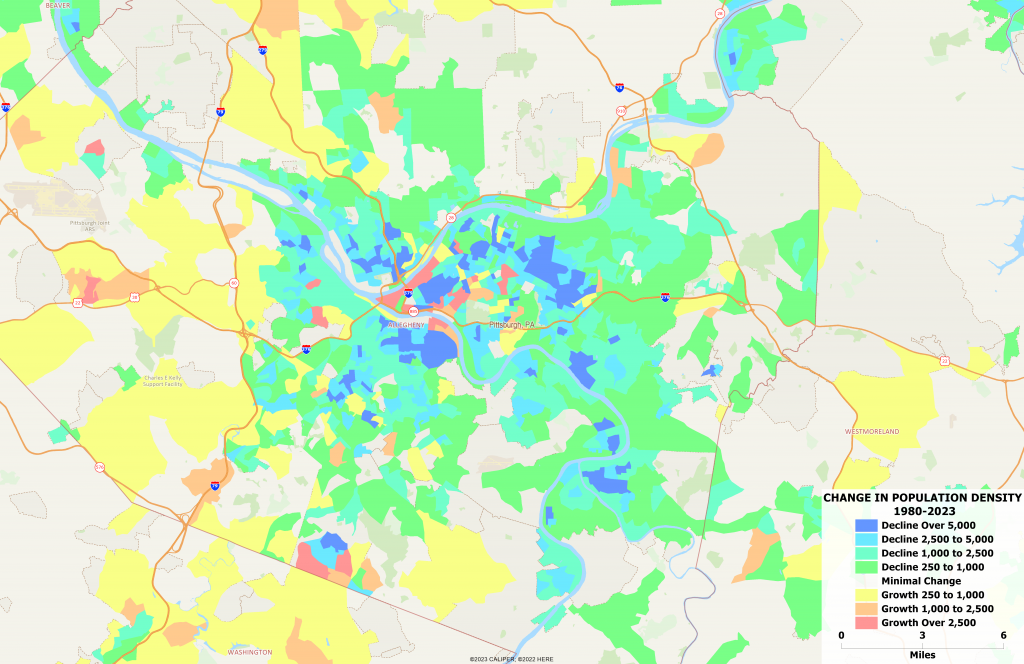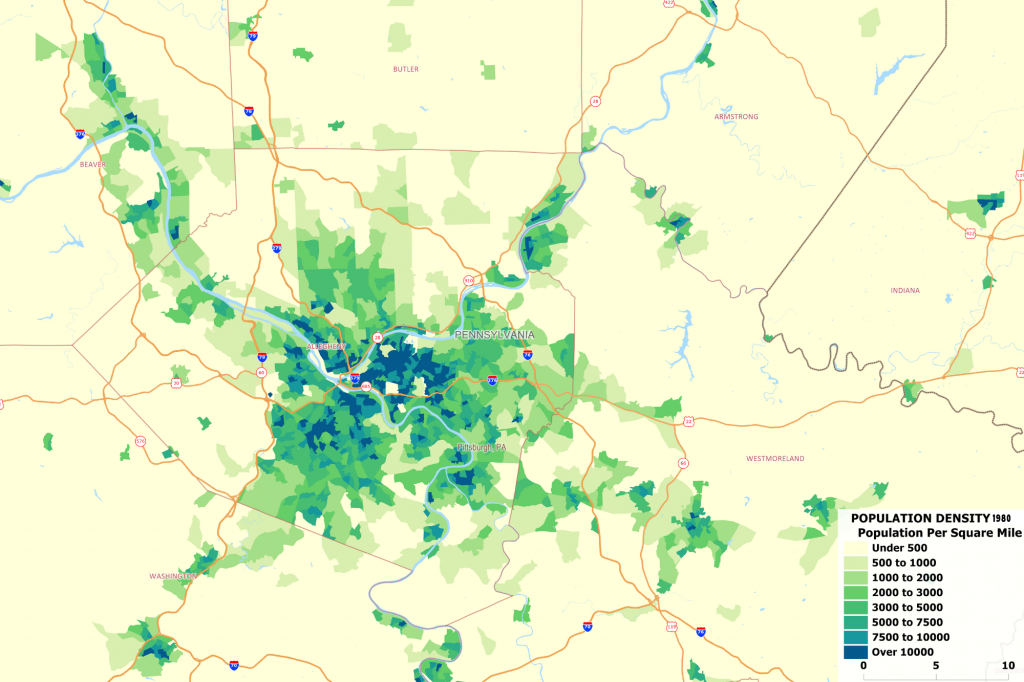The original link between the East Coast and the Midwest, Pittsburgh is the second largest city in Pennsylvania. The “Steel City” was known for manufacturing, and suffered some during the deindustrialization era, but has managed to pivot it’s focus and remain relevant in a modern age. While there has been a decline in population for the metropolitan area since 1980, the population changes have settled, and the city is still thriving.
Much like most cities over the last 50 years, the suburban areas of Pittsburgh are attracting residents that no longer want to live in the city center. Unlike most cities, Pittsburgh’s downtown certainly hasn’t cratered like most other downtown maps would show, and there are areas of the downtown area where the growth is significant, which is evident on the second map below. The most popular suburban areas are to the north and west of the city.




The Pittsburgh metro area’s economy benefits from a highly educated population, who have more bachelor’s degrees and graduate degrees than average. The percentage of the population living below the poverty line is substantially less than the national average, despite high unemployment. Occupations in the area are heavy in Office and administrative support, healthcare, and other healthcare technical occupations. The Steel City has many large medical providers and researchers, a good indication that their efforts to pivot the types of employment in the area are working. Notably, Pittsburgh is home to PNC, FedEx, and Bayer, among other large Fortune 500 companies.
Pittsburgh has a strong history, as well as an impressive recent record economically. During the financial crisis, Pittsburgh was one of the few cities to see home values increase. Additionally, they were the host city for the G20 in 2009. Pittsburgh has the opportunity to continue its positive momentum if they can continue to shift and change with the world around them.
